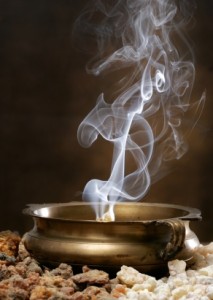
The following is respectfully quoted from “Myriad Worlds” by Jamgön Kongtrul:
This treatise [The Infinite Ocean of Knowledge] as a whole has [ten] divisions, equal in number to the ten perfections:
The realms that appear during the age of illumination; Buddha, the Teacher; the doctrine, both scriptural and experiential;
It’s continuation and spread in the Land of Jambu;
Maintaining ethical conduct; learning; reflection; meditation;
Through successively engaging in these, progression through the paths; and realization of the ultimate result.
***
There are general and specific causes and conditions that initiate [the creation of realms]:
For as long as infinite space and sentient beings exist,
The compassion of the victorious ones and the actions of sentient beings continue without end.
Those to be guided and enlightened guides
Manifest through inconceivable interconnections.
When the characters and dispositions of those to be guided are activated,
[The compassion of] the guides [arises], and the configurations of the realms and the dimensions of awakening appear;
The miraculous methods of guiding others manifest beyond all bounds.
The sphere of reality never changes into something else;
Yet blessings, vows, actions, and natural laws
Cause oceans of realms to appear.
The realm Unsurpassed is free from incidental defilement
and transcends the experience of the three realms: it is indivisible pristine wisdom.
in this self-manifesting, spontaneously appearing [realm,]
Richly Adorned,
Dwells illuminator, Great Glacial Lake of Wisdom;
A billion realms in his every pore.
Their locations, shapes, sizes, durations, and arrangements are inconceivable.
Within the central minute particle in the palm of his hand lies the Oceanic World-System.
That itself contains many world-systems, in the center of which
Lies the realm called Flower-Filled World.
Furthermore, [between the wind] and Unsurpassed lie one billion four-continent world systems,
A great third-order thousand [world-system].
Multiplying that by factors of one billion
[Yields] Infinite Links, Continuums, Oceans,
And Flower-Filled World.
Each rests on an ocean and [is encircled by] an outer rim.
This is the sphere of influence of one supreme manifest dimension of awakening.
Inside the great outer rim, in a sea of scented water,
Four jeweled lotuses support
A tiered arrangement of twenty-five world-systems;
The thirteenth is known as Endurance. This third-order thousand world-system
Is completely encircled by realms–Covering, Surpassing, Stainless, Variously Emerged, etc.–
Equal in number to the particles of this thirteenth world-system.
[Endurance] is spherical, has a four-vajra demarcation,
and rests on a multicolored configuration of wind and a network of lotuses.
Illuminator, the teacher in this [world-system],
Appears throughout the Unsurpassed realms of the pure domains.
This four-continent [world-system] called Destructible
Is surrounded by ten other four-continent [world-systems].
It is taught that these [world-systems] are formed and destroyed together;
This is the experiential domain solely of the lords of the tenth stage of awakening.
***
In our own world-system, four [ages] occur: formation, abiding, destruction, and vacuity.
Of the two, environment and inhabitants, [a description of] the environmental world [is presented first]:
After the age of vacuity had elapsed at the end of the previous age,
Winds arose from the ten directions, creating a configuration in the shape of a cross;
Rain fell from a cloud, and amidst a mass of water,
A thousand lotuses were seen; thus the Fortunate Age was proclaimed.
The churning of water by wind produced a golden disc,
Upon which rain fell; [this became] the great ocean.
The churning by wind developed the [ocean’s] elements–superior, medium, and base;
These elements formed Mount Meru, the seven mountain ranges, the four continents and the outer rim.
The mountains and continents all extend eighty thousand [leagues] down into the ocean.
Mount Meru rises eighty thousand [leagues] above the ocean.
The four sides of Mount Meru are composed of crystal,
blue beryl, ruby and gold.
The sky [on each side] reflects these colors.
From sea level to half its height are four terraces.
Beyond it are seven golden mountain ranges, Yoke and the others.
The spaces between are filled with seas of enjoyment, which have eight qualities.
The four continents and the eight islands
Are semi-circular, trapezoidal, round and square.
There are numerous unspecified little islands.
The outer rim consists of a mountain range composed of iron;
A salt-water ocean fills the area as far as this range.
North from the center of the Exalted Land, beyond nine black mountains,
Stand Snowy Mountains, and north of these the Fragrant [Mountains].
Between these two mountain ranges lies Cool Lake; from its four sides
Four cascades flow in four directions toward the ocean.
A jambu tree adorns the lake’s shore,
And so this continent is known as the land beautified by the jambu tree.
The names Majestic Body and the others indicate their distinguishing features.
Tail-Fan Island is inhabited by cannibal demons, and the other, by humans.
The hells and the world of the starving spirits are located below the earth.
Animals, the inhabitants of the depths, dwell in the great ocean.
Demi-gods [live] in the crevices of Mount Meru from the water’s edge down.
The Four Groups of Great Kings reside mainly on the terraces of Mount Meru.
Beings may also dwell in various unspecified secondary abodes.
Above Mount Meru is the heaven of the Thirty-three
In which is found the Victorious Residence, the city called Lovely,
Parks, playing fields, the All-gathering tree, the fine stone slab,
The Assembly Hall of the Excellent Law, as well as the dwelling of the yaksas.
Above, Conflict Free, Joyful, Enjoying Creations, and [Mastery Over] Others’ [Creations]
Rest on riches like cloud formations in the sky.
There are sixteen heavens in the form realm, beginning with Group and Pure;
Above them all is Lesser Unsurpassed.
The lord bodhisattvas reside above that, according to the Five Treatises on the Stages.
[The heavens] double in size and grow increasingly magnificent.
One third-order thousand world-system is fathomed by the vision of the proclaimers and solitary sages,
Who assert that it is composed of indivisible particles of matter.
The nature of each being is unobscured and undetermined.
The four absorptions of the formless realm and the other realms arise sequentially; [the beings within them]
Diffuse from higher to lower, down to the hells.
Moreover, the four levels of absorption of the formless realm
Are only distinctions in contemplation; they have no form or location.
The form realm: In the fourth level of meditative concentration, [there are] five pure domains and three heavens of ordinary beings.
Three [heavens] are located within each of the lower three levels of meditative concentration.
The desire realm comprises thirty-six types of beings:
Six groups of gods, [humans of the] four continents,
[Inhabitants of the] eight islands, animals and starving spirits,
[Beings in the] eight hot hells, and the eight cold hells.
The twenty existences, ten happy and ten miserable,
May also be classified as twenty-eight.
Within the happy existences–the form realm and the rest–
Lifespans and possessions decrease the lower the level.
In the miserable existences, suffering increases the lower the level.
The four [levels] of absorption, the four levels of meditative concentration, and the desire realm
Comprise nine levels. In terms of type, there are six [classes] of beings.
A classification of five–human, divine, and three miserable existences–
May be made in terms of paths and courses.
All these beings may be categorized according to the four modes of birth,
Or into pure, corrupt, and indeterminate groups.
During the time of abiding, most beings, except for animals,
Experience consequences that are predetermined.
In our world, humans have a wide variety of lifespans, wealth, and physical size.
Lifespan decreases from incalculable to ten,
And then increases to eighty thousand, and so on.
During a decline, a rise, and eighteen intermediate cycles,
There are fluctuations. Three continents are places where [consequences] are experienced;
Jambu Land, the most distinguished, is the place action.
The nourishment derived from meditative concentration and other [pristine] qualities gradually deteriorated due to craving.
The sun and moon provided light, and King Honored by Multitudes appeared.
Then, such distinctions as the four eras and four classes arose.
Wheel-monarchs, who [possess wheels of] gold, silver, copper, and iron,
Appear in this world only when the lifespan is no less than eighty thousand years.
Some say that they reign totally over the third-order thousand world-system.
There are many variations in food, hunger and thirst,
color of clothing night and day, etc.
Beings in lower [realm] do not see those in the higher.
At the time of destruction, the miserable realms, beginning with the hell realms, empty.
Gods and humans attain meditative concentration and are born in the form realm.
As the realms empty of inhabitants, the [beings of] the lower realms move higher.
The heavens of the first meditative concentration and below are destroyed by fire.
Space alone remains, a vacuity containing nothing at all.
Again formation occurs, and again abiding, and finally destruction by fire.
After seven such [sequences], a deluge at the end of the eighth
Destroys the second meditative concentration and below.
Seven destructions by fire alternating with one by water occur seven times,
Ending with another seven by fire.
Finally, intense wind destroys the third meditative concentration and below.
Because those three contemplations have imperfections [they are destroyed];
The fourth, being free of imperfection, is not destroyed by the elements.
Altogether, sixty-four great cycles of destruction occur.
Each of these ages of formation, abiding, destruction, and vacuity
Lasts for twenty intermediate ages; together, these [four] constitute one cosmic age.
Such statements as that in a single age seven fires,
One flood, and one wind arise, destroying the third level of meditative concentration and below,
Reflect different points of view of different systems.
The pure realms and the Seat of Enlightenment, etc., are not destroyed,
Since they are not the result of the origin [of suffering].




